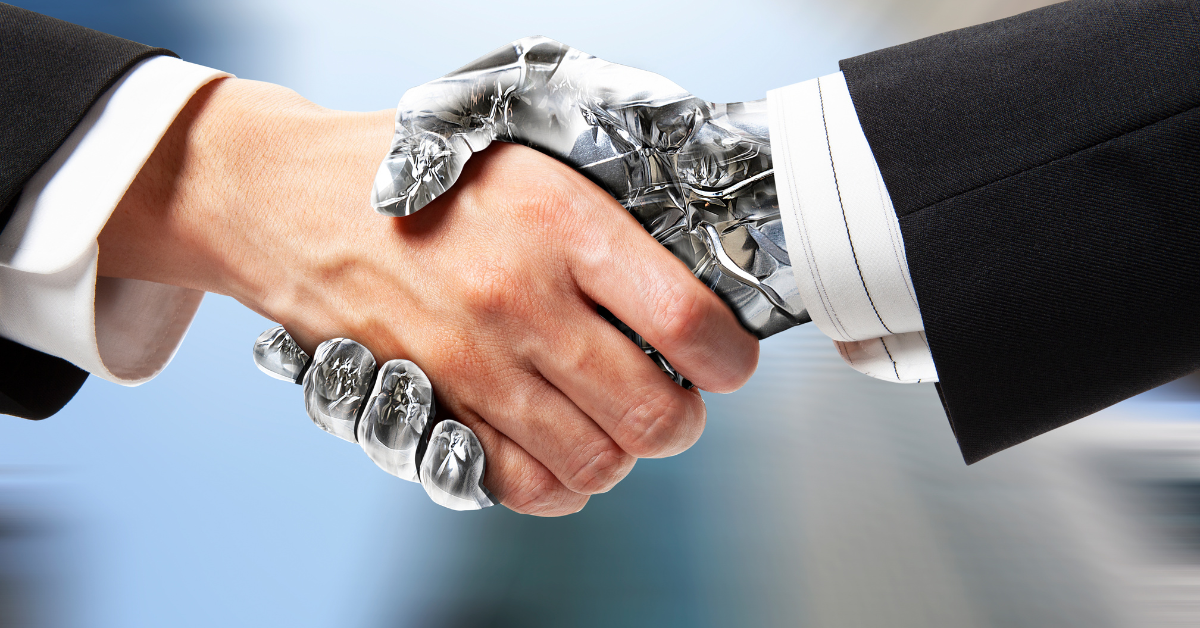


If I asked you to dig a hole with a shovel on the ground next to you, would you use your hands or the shovel? A shovel is technology, it’s just old technology, really old technology. But at some point, our ancestors used a stick to dig up food, which evolved into the finely designed and highly robust tool we call a shovel.
If I asked you to dig a hole and there was a digger sitting next to the shovel, would you still use the shovel?
This is how we ended up with robots. We realized that a lot of the jobs humans were doing were very dangerous and that our brains were our biggest strength, so we learned how to build machines to help us to move things on the ground, on the sea and in the air. Eventually, we built machines to help save lives. We built machines to help us better understand the body. And now we are even using those machines to map our DNA and create cures at the molecular level.
A robot is a machine developed to perform tasks that help humans. As early as 1500 B.C., humans were designing mechanical devices to carry out physical tasks: Egyptian water clocks used human figurines to strike the hour bells. The ancient timekeeping device measured time as a result of the force of water falling through it, and the water level inside indicated the time of day.
Modern robots are typically designed to do three things: sense, compute and act. To sense, robots use anything from basic obstacle-detecting sonar to more complex or even multiple sensors, including cameras, gyroscopes and laser range finders. Computing can involve a simple electronic circuit, a robust multi-core processor or a cluster of networked computers. Action varies greatly, with some robots capable of mobility, others of manipulation and some both.
Some robots are autonomous, meaning they can make decisions and act on their own. This is possible because we have information, or data, on nearly everything that is happening in the world, as it happens. We know where the planes are, where the trains are, and anyone with a mobile phone can alert emergency services or anyone else of their exact location, from almost anywhere in the world. We also know how to find and track many of the essentials we need to survive, such as food in cross-country transit.
RELATED READ: McKinsey Logistics Disruptors on autonomous robotics
This data allows us to automate some of the things that machines do. At an elementary level, a machine can choose between apples and oranges, separate them and place them on a conveyor belt to the correct boxes for shipping to stores. And while machines carry on these tedious tasks, we have utilized the growing wealth of data and information to build more advanced robots.
Today, we program robots to perform multiple tasks automatically, all with a high degree of precision and accuracy. Equipped with sensors, processors and actuators that allow them to interact with their environment, robots are helping humans in a variety of industries, such as manufacturing, healthcare and space exploration. They come in many shapes and sizes, from small mobile robots to large industrial robots, and they are increasingly being used to improve efficiency, productivity and safety in both workplace and everyday settings. In the home, robots can also perform laborious and time-consuming chores like cleaning the floors or vacuuming. There are even robots that help farmers look after their crops, automatically sensing the differences between weeds and plants and treating them accordingly.
We are now seeing robots that follow a set of business rules and adapt those rules as conditions shift, in real time. They react to information that is constantly changing, like food delivery to and from stores. If a delivery truck is held up in traffic and will arrive 30 minutes later than expected, humans no longer need to get involved to make decisions based on what else is happening in the distribution center. Instead, the robots can automatically adjust tasks to enable the best possible outcome with little to no human direction.
WATCH: Robots and humans working together in the warehouse
These on-demand shifts and optimizations are possible through the power of Artificial Intelligence (AI). Today’s robots can navigate and move around warehouses without human intervention, using advanced algorithms to detect and avoid obstacles in real time.
Modern robots can optimize inventory management by analyzing data from sensors, RFID tags and warehouse execution systems to track inventory levels, monitor demand and streamline replenishment processes. And they can efficiently handle order fulfillment processes, from picking and packing to shipping, using computer vision and machine learning to accelerate customer deliveries and reduce errors.
While it’s clear that today’s machines are smarter, more advanced and more flexible systems, they are still very much the same as that shovel: a tool developed to help humans perform tasks.